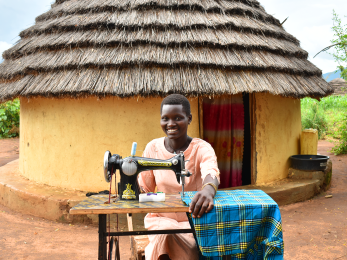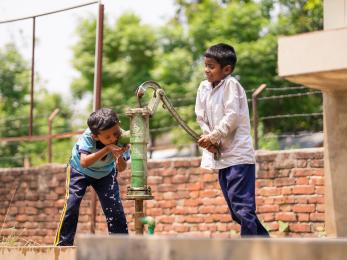Why Adolescent Girls’ Programming Matters

Every year, 16 million adolescent girls give birth, putting them at risk for anemia, postpartum hemorrhage, obstetric fistula and death — childbirth is the second leading cause of death among girls globally. Girls in Niger are especially vulnerable; the average age for marriage is 15.5 and the maternal mortality rate is among the highest in the world.
However, the majority of maternal and child health development programs target already pregnant and lactating women and children under age 5, with a focus on those under age 2. This misses an opportunity to target adolescent girls for more sustainable, positive and impactful maternal and child health outcomes. With this in mind, Mercy Corps, together with Helen Keller International, is targeting adolescent girls through Sawki, a USAID Food for Peace (FFP) funded program that addresses the food security needs of more than 92,000 people in 62 villages in Niger. Sawki, which means improvement in the local Hausa language, is one of a few such programs to target girls between the ages 10 and 18 as a strategy to increase food security by decreasing child marriage and early pregnancy to combat subsequently high maternal and child mortality
Sawki uses a Safe Space model to deliver lessons on essential nutrition actions, risks associated with early marriage and early pregnancy, reproductive health and the importance of education and basic literacy. Girls who are in the program longer have the opportunity to participate in the Safe Space + Livelihood model, which expands the program to include livelihood trainings such as small livestock management, gardening, and savings and loan activities. This research compares the two models to a control group, in which girls received no interventions, to determine the effectiveness of girl-centered programming. This first report, Improving Child and Maternal Health: Why Adolescent Girl Programming Matters, represents the first phase of research in Niger, with a more comprehensive randomized-control trial currently underway to substantiate and expand on the findings.
Key findings and recommendations
- Girl-centered strategies were effective in building girls’ knowledge on health and nutrition practices, reproductive health and financial literacy. To improve child and maternal health, USAID Food for Peace programming should include adolescent girls (before they are married and/or pregnant) as a key target group in countries where child marriage is the norm.
- Both models were successful in promoting major shifts in girls’ beliefs around the ideal age to have a baby and toward contraceptive use. To improve child and maternal health, programming must address cultural and social norms that promote child marriage and, as such, early pregnancy that leads to poor maternal and child health outcomes.
- There is a gap between girls' acceptance of contraceptive use and their actual use. Global evidence shows that knowledge and social norms toward contraceptives play a critical role in their uptake, but even more critical is their affordability and accessibility. It is also important to note here that girls’ and women’s education is the single most powerful correlate of contraceptive use and fertility decline. Programming that seeks to improve child and maternal health must link contraceptive knowledge with affordable access to family planning methods.
- More data is needed to determine the appropriate length of engagement on programming impact. Girls who participated in the program for 8 months showed more reproductive health knowledge and favorable attitudes toward family planning, as compared to girls who have participated for 20 months. However, girls who participated for 20 months had higher self-confidence.
Why Adolescent Girls’ Programming Matters | Read the Full Report ▸

